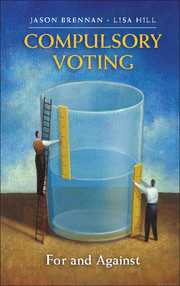1 - The Heavy Burden of Proof
Published online by Cambridge University Press: 05 June 2014
Summary
Where Are We the People?
Democracy is rule by the people. But what if the people refuse to rule? Many people worry if we do not have government by the people, then we will not have government for the people – at least not for all of them.
During presidential elections in the late nineteenth century, 70–80 percent of eligible Americans voted. For whatever reason, in the twentieth century, participation rates seem to have dropped to 50–60 percent. Midterm national, state, and local elections averaged a mere 40 percent.
A U.S. president has never been elected by a majority of eligible voters. In the 1964 election, 61.05 percent of voters cast their ballots for Lyndon Johnson – the largest majority any president has ever enjoyed. Yet, at the same time, because turnout was so low, Johnson was in fact elected by less than 38 percent of all voting-eligible Americans. We call Reagan’s 1984 victory a “landslide,” but less than a third of voting-age Americans actually voted for him. Less than a quarter of eligible Americans voted to reelect Bill Clinton in 1996. In all elections, a minority of the voting-eligible population imposes a president on the majority.
- Type
- Chapter
- Information
- Compulsory VotingFor and Against, pp. 3 - 24Publisher: Cambridge University PressPrint publication year: 2014
References
- 5
- Cited by



